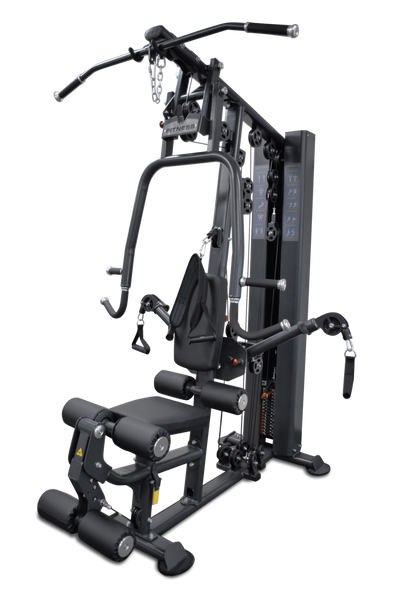The need for robust security measures at international borders has never been more pressing. With the increasing volume of goods crossing borders and the rising threats of smuggling and terrorism, customs agencies are under immense pressure to ensure that their inspections are thorough and efficient. One of the most significant advancements in this realm has been the evolution of border X ray scanner technology. These systems, which have become essential tools for customs inspections, combine enhanced imaging capabilities with sophisticated software algorithms to improve both security and operational efficiency.
Enhanced Imaging Capabilities
Modern border X-ray scanners utilize advanced imaging technologies that provide high-resolution images of cargo and vehicles. Traditional X-ray machines often struggled with resolution and contrast, making it difficult for operators to identify potential threats or illegal items effectively. However, advancements in detector technology and image processing algorithms have led to scanners that can produce detailed images with enhanced clarity.
These new-generation scanners often employ dual-energy X-ray technology, which differentiates between various materials based on their atomic number. By analyzing the absorption characteristics of different materials, these scanners can help operators quickly identify suspicious items, such as weapons, drugs, or contraband, with increased accuracy. This capability significantly reduces the chances of false positives and negatives, streamlining the inspection process.
Integration of Artificial Intelligence
Artificial intelligence (AI) is transforming border X-ray scanner technology by integrating machine learning algorithms that assist in analyzing scanned images. AI systems can be trained to recognize patterns and anomalies in the images produced by the scanners, enabling them to flag items that require further inspection. This advanced analysis not only speeds up the decision-making process but also reduces the workload on human operators, allowing them to focus on more complex cases.
Furthermore, as AI continues to learn from the vast amounts of data generated during inspections, its accuracy and efficacy improve over time. This continuous learning capability means that customs agencies can adapt to emerging threats and tactics used by smugglers or terrorists more quickly than ever before.
Real-Time Data Sharing and Connectivity
The integration of border X-ray scanners with national and international customs databases has paved the way for real-time data sharing between agencies. This connectivity allows for swift access to relevant information, such as the history of shipments, previous inspections, and alerts on specific cargo. When a scanner detects a potential threat, it can cross-reference the scanned data with these databases almost instantaneously.
This capability not only enhances the speed of the inspection process but also helps customs officials make more informed decisions based on up-to-date intelligence. The ability to share data across borders aids in creating a more unified global approach to customs and border security, making it significantly harder for criminals to exploit gaps in the system.
Portable and Mobile Scanning Solutions
In addition to stationary X-ray scanners, advancements in technology have led to the development of portable and mobile scanning solutions. These scanners can easily be transported to various locations, allowing customs agencies to conduct inspections in more flexible settings. For example, mobile scanners are particularly useful at temporary checkpoints, during special events, or in emergency situations where rapid assessments are required.
The portability of these devices does not compromise their effectiveness; many mobile scanners now come equipped with similar imaging technologies and software as their larger counterparts. This means that customs agencies can maintain high standards of security without incurring the costs associated with building permanent inspection facilities at every location.
Increased Training and Support
As the technology behind border X-ray scanners continues to evolve, so too does the need for comprehensive training programs for customs officials. Agencies are investing in advanced training initiatives that ensure personnel are well-versed in operating the latest scanning equipment and interpreting the images produced. In addition, many manufacturers now offer remote support services, allowing operators to troubleshoot issues or seek expert advice without needing to wait for on-site assistance.
This increased emphasis on training and support enables customs agencies to maximize the return on their investment in technology. Well-trained personnel are more efficient and better equipped to respond to threats, thereby enhancing overall security at borders.
The Role of Regulation and Compliance
As advancements in border X-ray scanner technology continue to emerge, it is essential that customs agencies remain compliant with international regulations and standards. Organizations such as the World Customs Organization (WCO) provide guidelines on best practices for customs inspections and the use of inspection technologies. By adhering to these standards, customs agencies can ensure that their operations are not only effective but also aligned with global security protocols.
Engaging with regulatory bodies also allows customs agencies to stay informed about new developments in technology and emerging threats, further bolstering their security capabilities. Regular audits and evaluations of scanning procedures also contribute to maintaining a high level of effectiveness and accountability.
Future Trends in Border X-Ray Scanner Technology
Looking ahead, the future of border X-ray scanner technology holds immense potential. Ongoing research and development aim to create even more advanced imaging solutions, such as 3D imaging and improved detection algorithms. These future systems may incorporate additional technologies, such as drones or robotic systems, to enhance the inspection process further.
Moreover, as technology progresses, the costs associated with deploying these advanced systems are likely to decrease, making them accessible to a wider array of customs agencies globally. This democratization of technology will empower countries with fewer resources to enhance their border security measures, contributing to a safer international landscape.
In summary, advancements in border X-ray scanner technology are playing a pivotal role in enhancing security and efficiency in customs inspections. Through improved imaging capabilities, AI integration, real-time data sharing, and increased training, customs agencies are better equipped to combat the challenges of modern border security. As technology continues to evolve, these innovations will undoubtedly shape the future of customs operations around the world.
Posted inBlog
Enhancing Security and Efficiency in Customs Inspections



